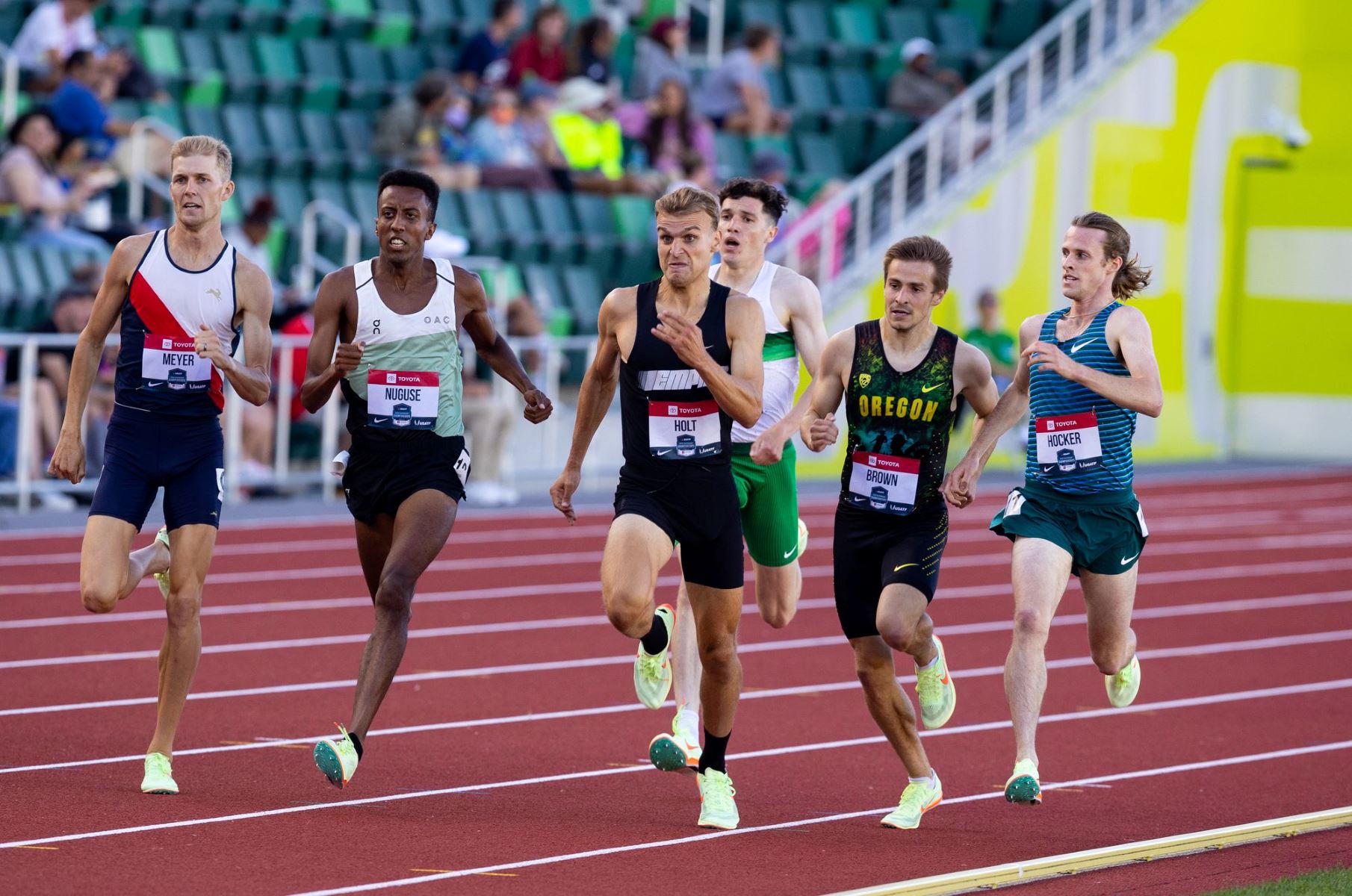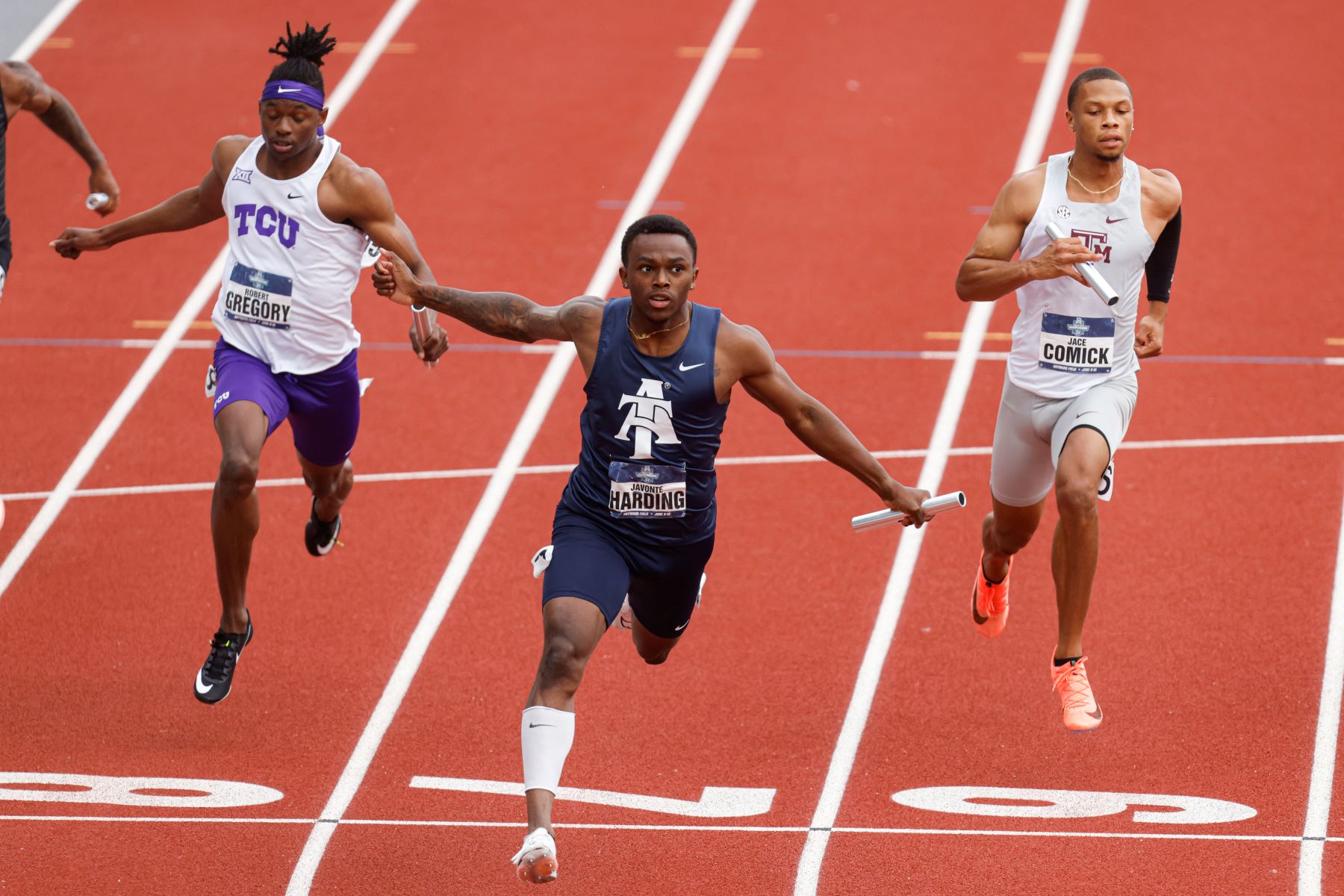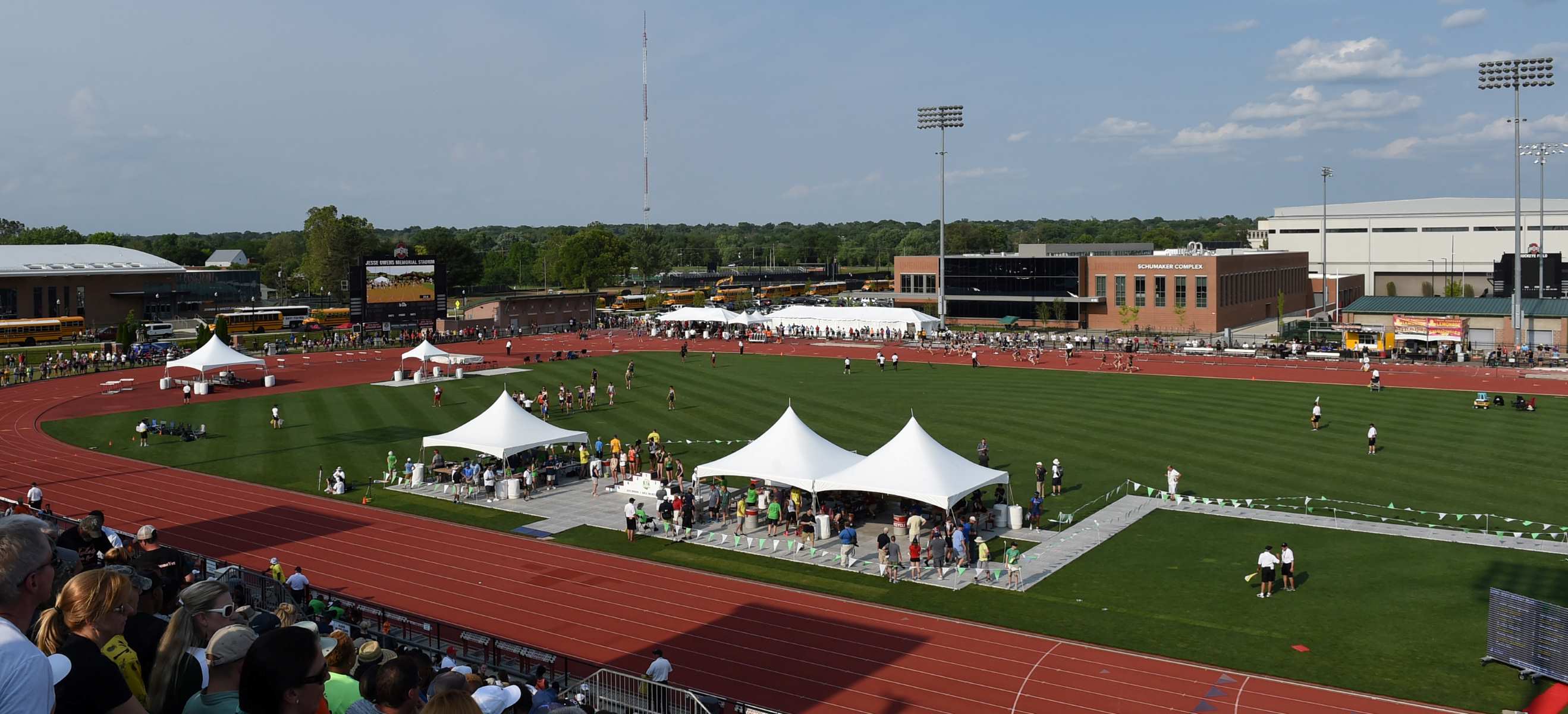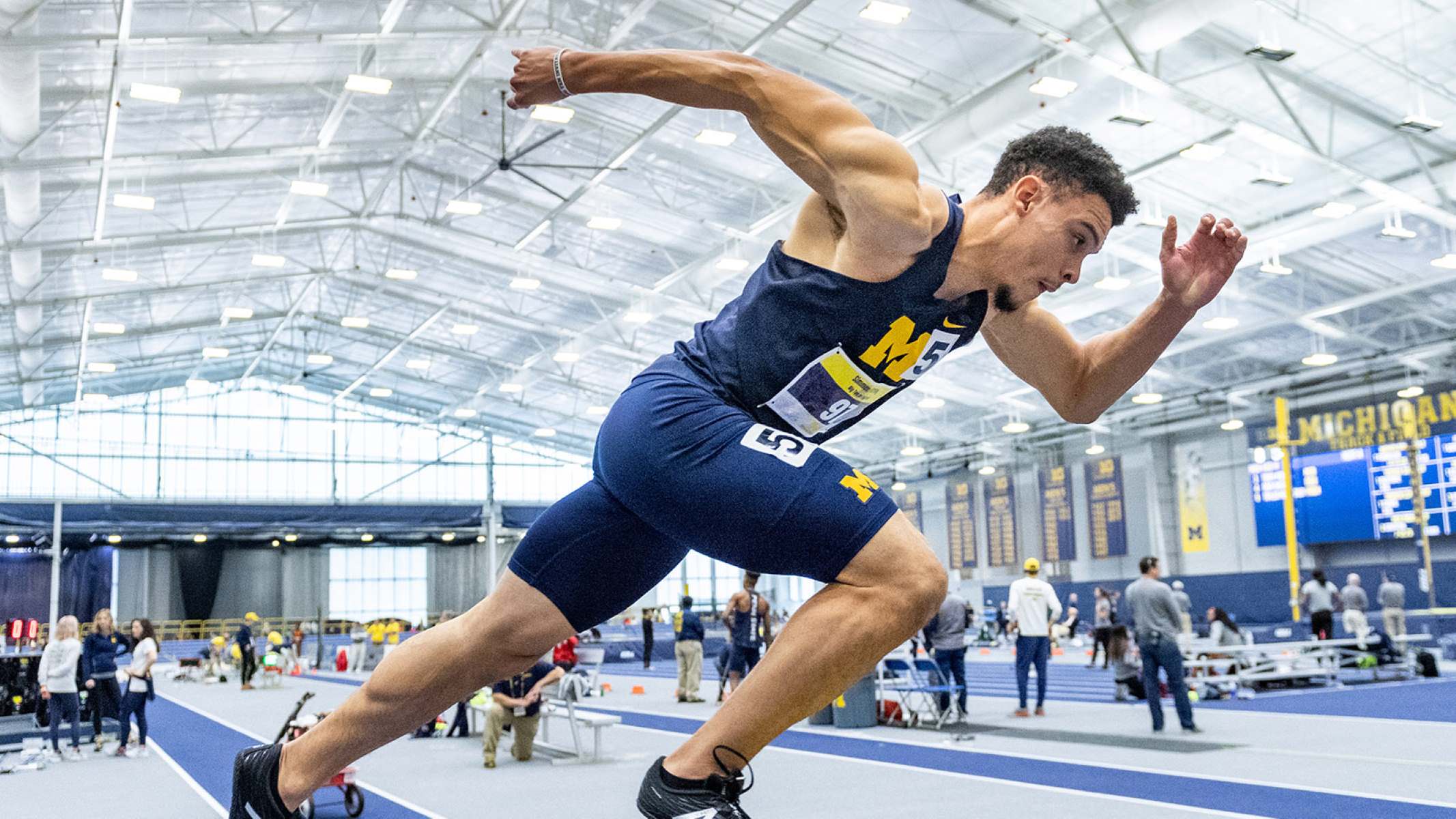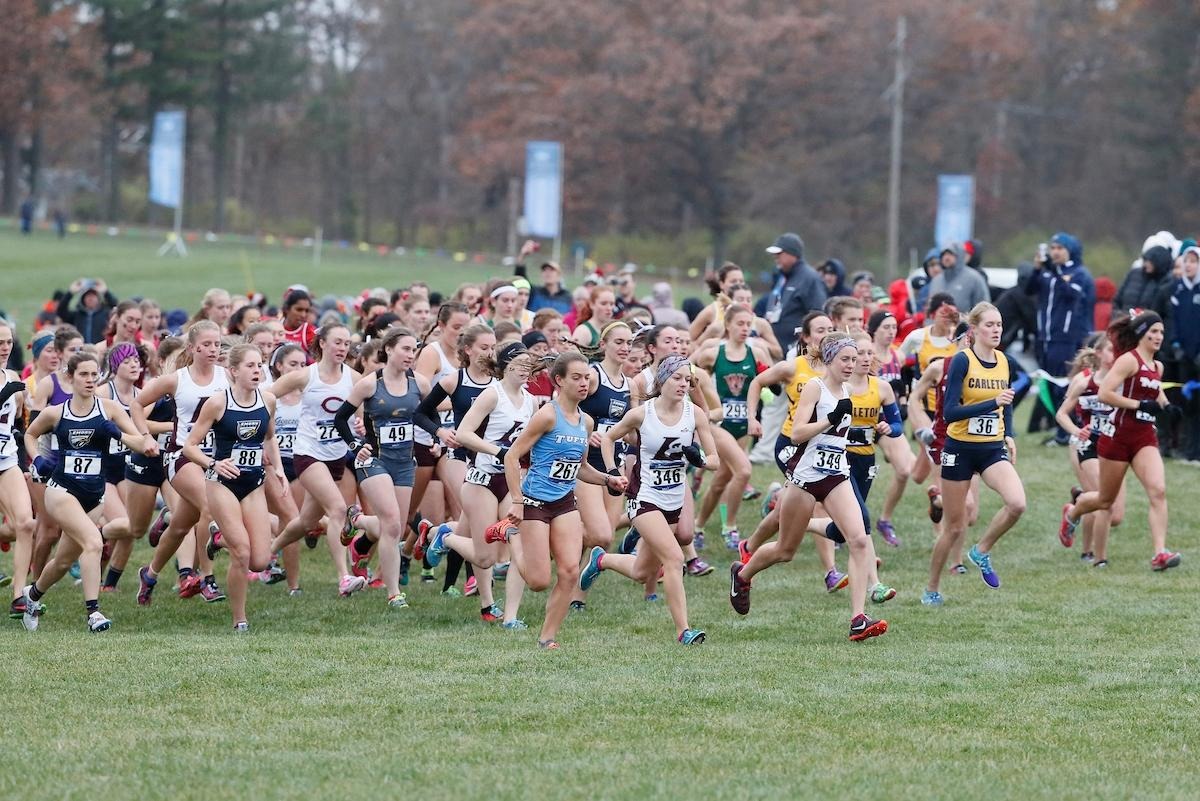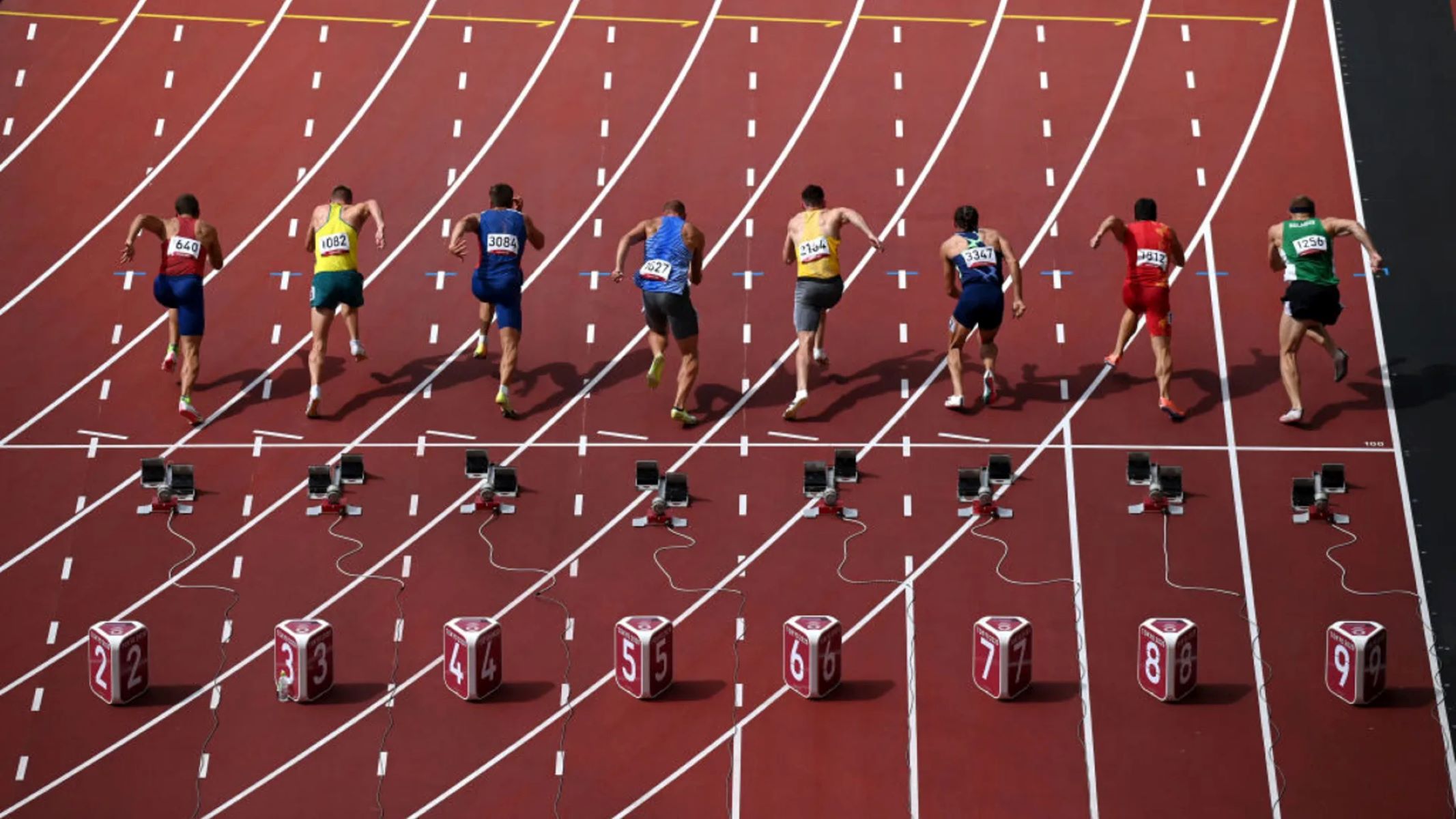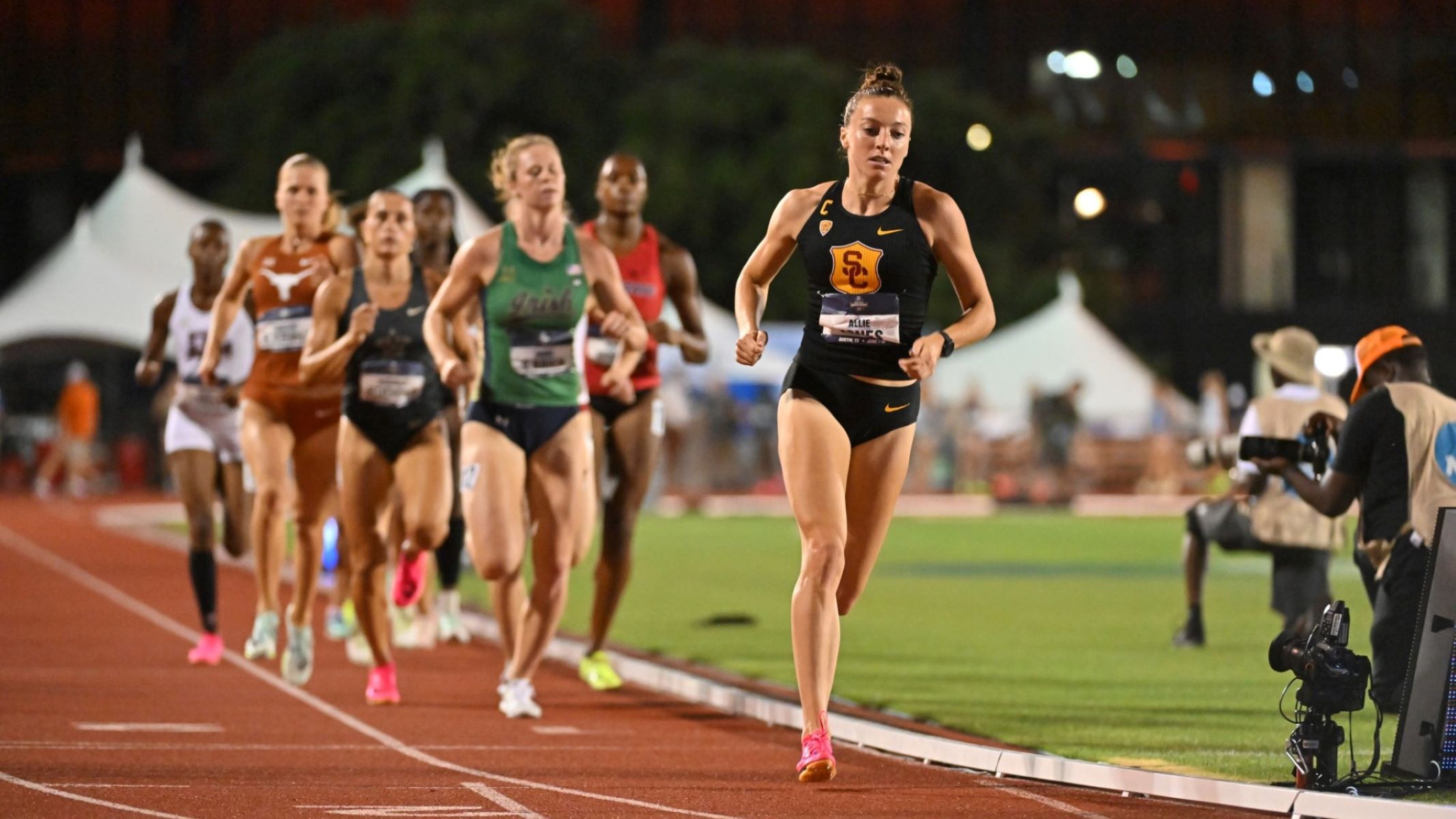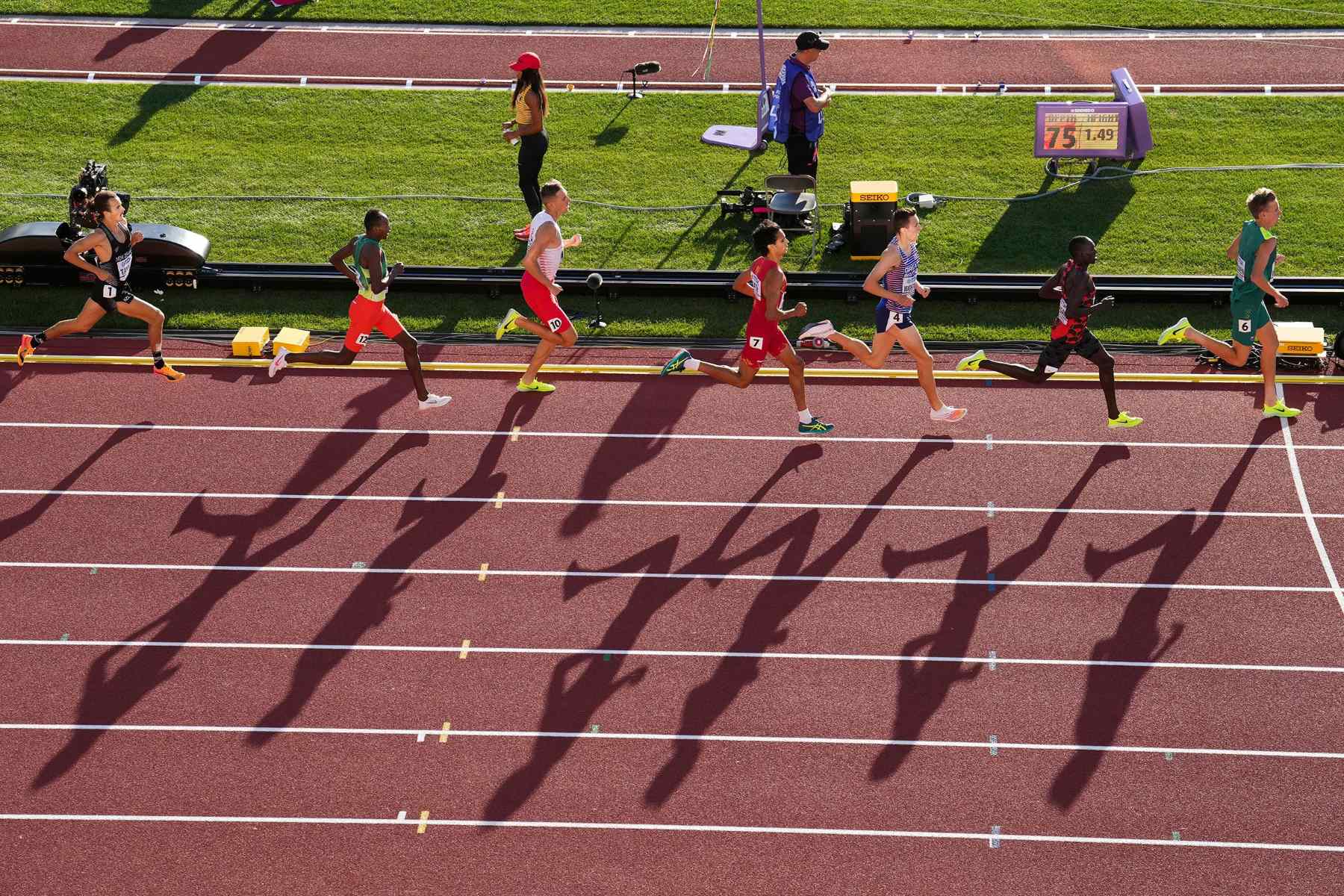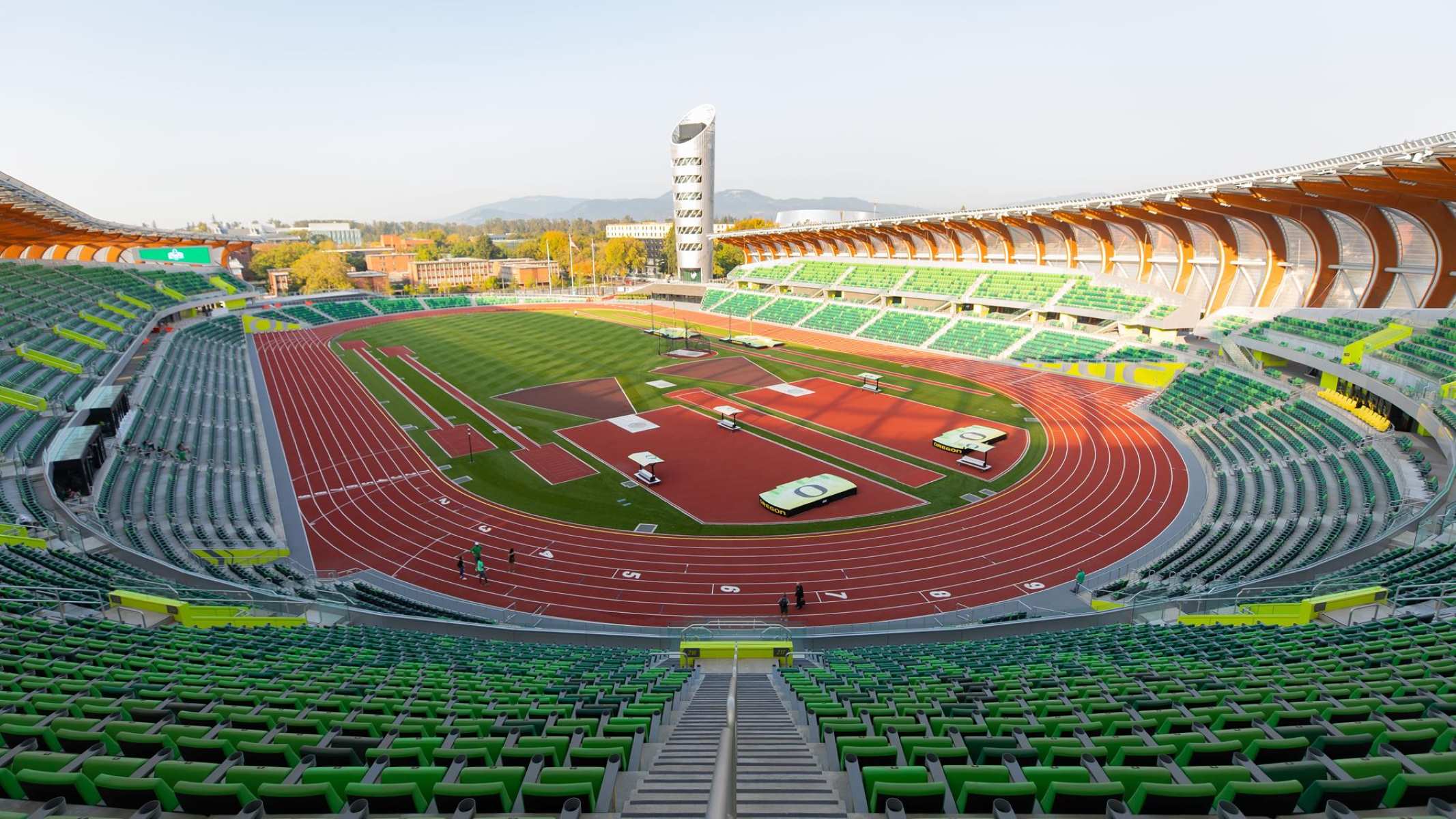Home>Misc>Featured>How Many Athletes Go To NCAA Track And Field Regionals
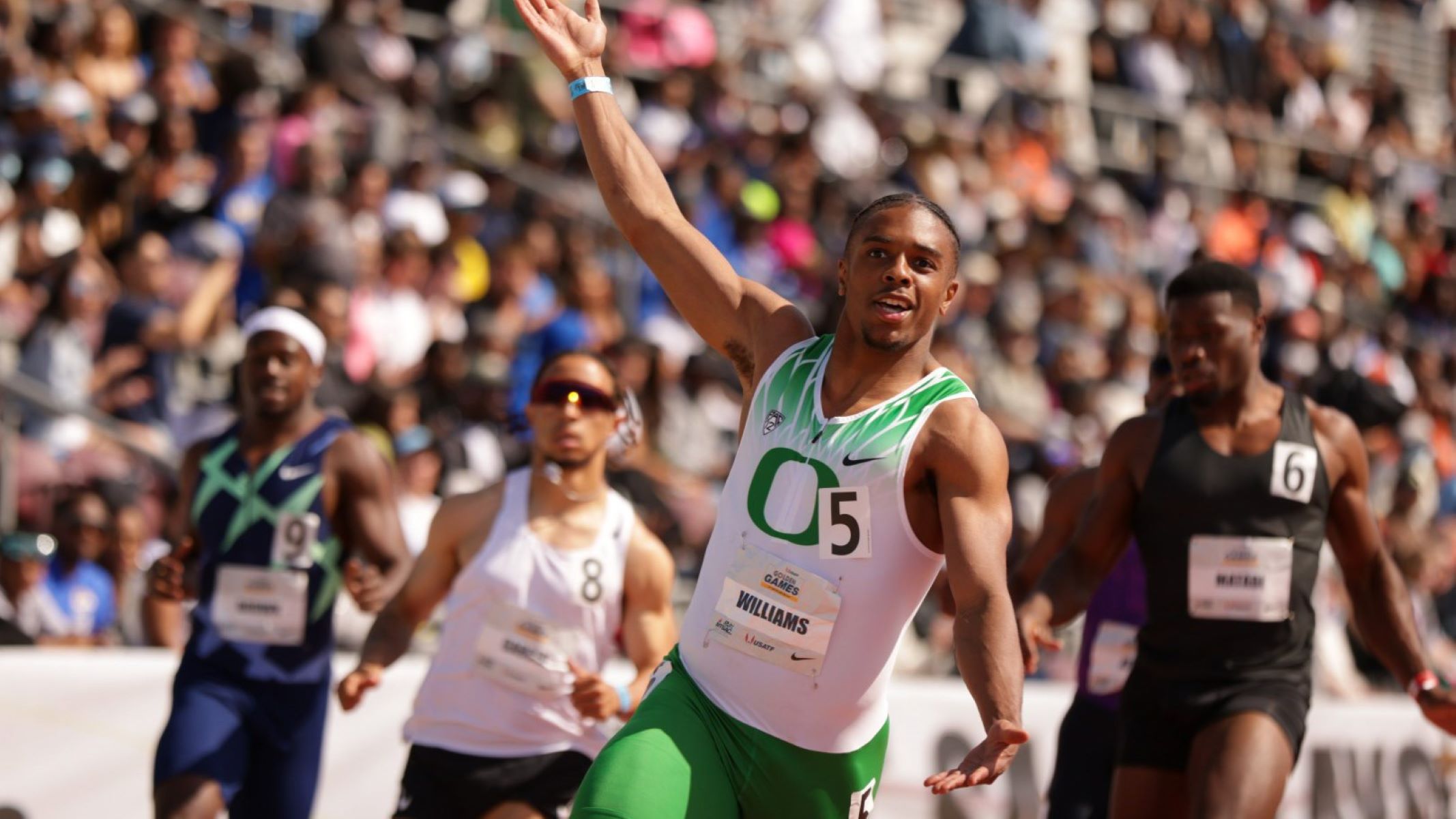

Featured
How Many Athletes Go To NCAA Track And Field Regionals
Modified: January 2, 2024
Discover how many athletes go to NCAA Track and Field Regionals. Get insights on the featured athletes competing and their journey to this prestigious event.
Introduction
Welcome to the exciting world of NCAA Track and Field Regionals, where the best collegiate athletes showcase their talent and compete for a chance to qualify for the highly anticipated NCAA Championships. This annual event brings together athletes from universities across the United States, providing them with a platform to shine and showcase their skills on a national stage.
NCAA Track and Field Regionals serve as a crucial stepping stone for athletes aspiring to reach the pinnacle of their sport. It acts as a gateway to the NCAA Championships, where the best of the best go head-to-head in a battle for glory. These regionals are not only important for individual athletes looking to make a name for themselves, but also for their respective universities, which hope to secure prestigious titles and boost their athletic programs’ reputations.
For athletes, NCAA Track and Field Regionals are the culmination of months (or even years) of hard work, dedication, and intense training. They provide the opportunity to prove themselves against fierce competition, set personal records, and measure their performance against the best athletes in the collegiate track and field scene.
Moreover, NCAA Track and Field Regionals create an electrifying atmosphere. Thousands of spectators fill the stands, cheering on their favorite athletes, creating an adrenaline-filled environment that motivates and pushes the competitors to give their all. The sense of camaraderie and sportsmanship displayed during these events highlights the athletic spirit that is ingrained in the NCAA.
In this article, we will dive deeper into the world of NCAA Track and Field Regionals, exploring the qualification process, the number of athletes involved, and the factors that influence athlete participation. Furthermore, we will examine historical trends and discuss the implications and significance of athlete participation at NCAA Track and Field Regionals. So, fasten your seatbelts, and let’s delve into the captivating world of NCAA Track and Field Regionals!
Overview of NCAA Track and Field Regionals
NCAA Track and Field Regionals is a prestigious event that serves as a qualifying competition for the NCAA Championships. It is a highly anticipated and crucial stage in the collegiate track and field season. The regionals are organized into various geographical areas, with each region hosting its own competition.
The purpose of NCAA Track and Field Regionals is to determine which athletes and relay teams advance to the NCAA Championships. The top athletes from each regional competition earn a spot at the national championships, where they will compete against the best collegiate athletes from across the country.
These regional competitions are typically held over a span of three days, featuring a wide range of track and field events. Athletes showcase their skills in disciplines such as sprints, hurdles, jumps, throws, and middle-distance and long-distance races.
Participants in NCAA Track and Field Regionals are selected based on their performance during the regular season. Athletes must achieve qualifying marks or times in their respective events to earn eligibility for the regionals. The qualifying standards are set by the NCAA and can vary from year to year.
The NCAA Track and Field Regionals are characterized by intense competition and high stakes. Athletes understand the significance of this stage and give their all to secure a spot in the NCAA Championships. The pressure is palpable as athletes strive to perform at their best and meet the qualifying standards.
Moreover, the NCAA Track and Field Regionals provide a platform for athletes to gain exposure and recognition. It attracts the attention of coaches, scouts, and fans, who closely follow the performances and take note of rising stars in the world of collegiate track and field.
During the regionals, athletes not only compete for individual success but also contribute to their university’s overall performance. The points earned by athletes in their respective events contribute to their team’s score, further fueling the competitive spirit among universities.
Overall, NCAA Track and Field Regionals play a vital role in the collegiate track and field landscape. It brings together the most talented athletes for a thrilling and highly competitive competition, setting the stage for the NCAA Championships. The regionals act as a gateway for athletes to display their skills and earn their place amongst the elite competitors in collegiate track and field.
Qualification Process for NCAA Track and Field Regionals
The qualification process for NCAA Track and Field Regionals is a rigorous and competitive endeavor. Athletes must meet specific criteria to earn eligibility to compete in these prestigious events. Understanding the qualification process is essential for athletes and coaches as they strive to secure a spot at the NCAA Championships.
The qualification process for NCAA Track and Field Regionals revolves around achieving specific performance standards. These standards are set by the NCAA and are used to ensure that the most deserving and accomplished athletes earn their place in the regional competitions.
Firstly, athletes must compete in sanctioned track and field events during the regular season. These events serve as opportunities for athletes to showcase their abilities and achieve the necessary qualifying marks or times. The regular season performances serve as the basis for qualification, and athletes must meet specific standards in their respective events.
The qualifying standards vary across events, taking into account factors such as historical performance trends, competitive depth, and developing talent. The NCAA periodically reviews and adjusts these standards to maintain fairness and competitiveness in the qualifying process.
To determine the required qualifying marks or times, the NCAA looks at performance data from previous seasons and considers the average performance levels of athletes in each event. This helps set a benchmark that athletes need to meet or exceed to earn eligibility for the regionals.
Additionally, the NCAA implements a process known as the descending order list. This list takes into account the performance rankings of athletes in each event leading up to the NCAA Track and Field Regionals. The athletes with the top marks or times in each event earn automatic qualification, regardless of whether they meet the standard.
The number of athletes who qualify for NCAA Track and Field Regionals varies depending on the event and the region. In some events, the top 48 athletes in the descending order list qualify, while in others, the field may be smaller. This ensures that the most competitive athletes in each event have the opportunity to showcase their abilities at the regional level.
Coaches play a significant role in helping their athletes navigate the qualification process. They monitor their athletes’ progress throughout the regular season, identify areas for improvement, and devise training strategies to maximize their chances of meeting the qualifying standards.
In summary, the qualification process for NCAA Track and Field Regionals is based on achieving specific performance standards set by the NCAA. Athletes must compete in sanctioned events and meet the qualifying marks or times to earn eligibility. The descending order list and automatic qualification further ensure that the most accomplished athletes have the opportunity to compete at the regional level. Coaches play a pivotal role in guiding and preparing their athletes for the qualification process, maximizing their chances of securing a spot in these prestigious events.
Number of Athletes Competing in NCAA Track and Field Regionals
The number of athletes competing in NCAA Track and Field Regionals can vary depending on the event and the region. Each event typically has a predetermined number of spots available for athletes to qualify. The total number of athletes participating in the regionals is a culmination of these individual event qualifiers.
In some events, such as sprints or jumps, where there is typically a larger pool of participants, the number of athletes competing in the regionals can be higher. For example, in the 100-meter dash, it is not uncommon to see several heats with a significant number of athletes vying for a spot in the NCAA Championships.
However, in events with smaller participant pools, such as hammer throw or pole vault, the number of athletes competing can be relatively fewer. These events require specialized skills or equipment, resulting in a smaller pool of athletes qualifying for the regionals.
Additionally, the number of athletes who qualify for NCAA Track and Field Regionals can also differ based on the region. The NCAA divides the country into different regions, and each region has a set number of spots for athletes to advance to the NCAA Championships. Regions with more competitive depth in certain events may offer a higher number of qualifying spots compared to regions where the talent pool is smaller.
Furthermore, the number of athletes competing in the regionals is impacted by the qualifying process itself. As athletes strive to meet the performance standards set by the NCAA, the number of successful qualifiers will fluctuate from year to year. The performance levels of athletes across the country, as well as any changes made to the qualifying standards, can influence the final count of athletes competing in the regionals.
It’s worth noting that NCAA Track and Field Regionals showcase the best collegiate athletes from across the nation. Each athlete competing has proven their merit and earned their spot through their performances during the regular season. As such, the number of athletes competing in the regionals represents a highly competitive field, where the quest for qualification is fierce and only the best of the best make it through.
Overall, while the exact number of athletes competing in NCAA Track and Field Regionals varies depending on the event and region, the focus remains on showcasing the most talented collegiate athletes in each discipline. The regionals provide a platform for athletes to compete among their peers, pushing themselves to new heights, and striving to earn a place in the NCAA Championships.
Factors Affecting the Number of Athletes in NCAA Track and Field Regionals
The number of athletes competing in NCAA Track and Field Regionals is influenced by various factors that impact the qualifying process and the overall competitiveness of each event. Understanding these factors is crucial in comprehending the dynamics of athlete participation at the regional level.
One significant factor affecting the number of athletes in NCAA Track and Field Regionals is the qualifying standards established by the NCAA. These standards are designed to ensure that only athletes who have achieved a certain level of performance are eligible to compete. The NCAA regularly reviews and updates these standards to reflect the evolving athletic landscape, which can result in fluctuations in the number of athletes who qualify.
Another factor is the overall depth of talent in a particular event. If an event has a larger pool of talented athletes nationwide, the competition to qualify for the regionals becomes more intense, resulting in a higher number of athletes vying for limited spots. Conversely, events with less depth may have a smaller number of participants due to the smaller talent pool.
The geographical distribution of athletes across regions also plays a role in determining the number of athletes in NCAA Track and Field Regionals. Regions with a higher concentration of competitive athletes may have a larger number of participants in certain events, while regions with fewer athletes may have a smaller field. This distribution is based on factors such as regional demographics, historical trends, and the participation levels of universities in a specific region.
Furthermore, logistical considerations can impact the number of athletes in NCAA Track and Field Regionals. Facilities, scheduling constraints, and logistical challenges may limit the number of participants that can be accommodated in a particular event. In some cases, certain events may require multiple rounds or heats, which can affect the overall number of athletes advancing to the regionals.
Additionally, factors such as injuries, academic eligibility, and transfer rules can also impact the number of athletes competing in NCAA Track and Field Regionals. Injuries can prevent athletes from qualifying or competing at the desired level, reducing the overall field of participants. Academic eligibility issues can also disqualify athletes from participating, further impacting the numbers.
Overall, the number of athletes in NCAA Track and Field Regionals is influenced by a combination of factors including the qualifying standards, the depth of talent in each event, the geographical distribution of athletes, logistical considerations, and various eligibility factors. These factors create a competitive landscape where athletes must demonstrate exceptional skill and performance to earn their spot and compete at the regional level.
Historical Trends in Athlete Participation at NCAA Track and Field Regionals
Over the years, NCAA Track and Field Regionals have witnessed significant changes in athlete participation, reflecting various trends and developments in the world of collegiate track and field. Examining these historical trends provides insights into the evolution of athlete participation and the factors that have shaped it.
One notable trend in athlete participation is the overall increase in the number of athletes competing in NCAA Track and Field Regionals. As the sport continues to grow in popularity and more universities invest in their track and field programs, the talent pool has expanded, resulting in a larger number of participants vying for qualification. This growth can be attributed to factors such as increasing awareness and participation in track and field throughout high schools and a greater emphasis on athletic development.
Another trend is the greater diversity in athlete participation. In the earlier years, athlete participation was primarily dominated by athletes from traditional powerhouses in collegiate track and field. However, as the sport has gained traction across universities and regions, a broader range of schools and athletes from different backgrounds have emerged as contenders for NCAA Track and Field Regionals. This diversification has added depth and competitiveness to the field, further elevating the level of competition.
Advancements in training methods and technology have also played a role in shaping athlete participation trends. Athletes now have access to state-of-the-art training facilities, improved coaching techniques, and innovative equipment that aid in their development and performance. These advancements have enabled athletes to push their limits and achieve higher qualifying standards, ultimately contributing to larger participant pools at the regionals.
The influence of social and cultural factors cannot be overlooked when examining historical trends in athlete participation. The increased representation of athletes from diverse backgrounds, including different ethnicities, genders, and geographic regions, reflects the evolving landscape of collegiate sports and a growing emphasis on inclusivity and equal opportunities. This diversification has not only impacted the number of athletes participating but has also contributed to the richness and vibrancy of NCAA Track and Field Regionals as a showcase of talent and athleticism.
Additionally, changes to the qualifying process and the implementation of the descending order list have influenced historical trends in athlete participation. These adjustments have allowed for greater fairness and accuracy in selecting the most deserving athletes, ensuring that the regionals attract the best performers in each event.
As NCAA Track and Field Regionals continue to evolve, it is reasonable to expect that historical trends in athlete participation will persist, with a continued growth in the number of athletes competing, increased diversity among participants, advancements in training methods, and ongoing efforts to foster inclusivity in collegiate track and field.
In summary, historical trends in athlete participation at NCAA Track and Field Regionals reveal a compelling narrative of growth, diversity, and advancement. These trends reflect the evolving landscape of collegiate track and field, driven by factors such as increasing participation, improved training methods, social and cultural influences, and changes in the qualifying process. By honoring these historical trends, NCAA Track and Field Regionals continue to showcase the talents of the best collegiate athletes across the nation.
Implications and Significance of Athlete Participation at NCAA Track and Field Regionals
The participation of athletes at NCAA Track and Field Regionals holds immense implications and significance not only for the athletes themselves but also for their universities, the sport of track and field, and the collegiate athletics landscape as a whole.
For athletes, participating in NCAA Track and Field Regionals represents the culmination of their hard work, dedication, and training throughout the season. It is an opportunity for them to showcase their abilities on a national stage and compete against the best collegiate talent in their respective events. The regionals serve as a measuring stick for athletes to assess their growth, set new personal records, and strive for excellence in their performances.
A successful participation in NCAA Track and Field Regionals can also have significant implications for an athlete’s future career. Impressive performances can attract the attention of professional scouts, opening doors to potential sponsorships, endorsements, and opportunities to compete at national and international levels. Regional participation serves as a stepping stone for athletes to elevate themselves to the next level of their athletic journeys.
Universities also benefit from the participation of their athletes in NCAA Track and Field Regionals. The success of individual athletes contributes to the prestige and reputation of the university’s athletic program. It enhances the visibility of the university and can attract prospective student-athletes, sponsors, and supporters. Furthermore, the success of athletes at the regionals can positively impact the overall team score, elevating the university’s standing in the collegiate track and field community.
The significance of athlete participation at NCAA Track and Field Regionals extends beyond individual and university achievements. The regionals serve as a showcase of the diverse and rich talent within collegiate track and field. The performances of athletes inspire and motivate future generations of track and field enthusiasts, encouraging their involvement in the sport and fostering a love for athleticism.
Moreover, NCAA Track and Field Regionals contribute to the overall growth and development of the sport. The regionals provide a platform for new records to be set, rivalries to form, and memorable moments to be created. These events generate excitement and interest among fans, promoting fan engagement with the sport and driving its popularity.
Regionals also serve as a selection process for the NCAA Championships, where the best athletes from across the nation compete for national titles. The significance of athlete participation at regionals is therefore amplified as athletes strive to secure qualification for the pinnacle event, representing the culmination of their collegiate track and field careers.
Overall, the implications and significance of athlete participation at NCAA Track and Field Regionals are far-reaching. Athletes have the opportunity to display their skills, further their careers, and leave a lasting impact on the sport. Universities benefit from the accomplishments of their athletes, enhancing their athletic programs and attracting attention. The regionals contribute to the growth and popularity of collegiate track and field, inspiring future athletes, and shaping the landscape of the sport.
Conclusion
NCAA Track and Field Regionals represent a pivotal moment in the collegiate track and field season. The participation of athletes in these prestigious events holds significant implications and captures the essence of competition, growth, and achievement.
Throughout this article, we have explored the world of NCAA Track and Field Regionals, delving into the qualification process, the number of athletes involved, historical trends, and the significance of athlete participation. These insights demonstrate the immense dedication, talent, and hard work exhibited by athletes as they strive to qualify and compete at the regional level.
NCAA Track and Field Regionals provide a platform for athletes to shine and showcase their skills on a national stage. It is a culmination of their efforts throughout the season and a testament to their growth and development as collegiate track and field athletes.
Moreover, the regionals have implications beyond individual achievements. Universities benefit from the success of their athletes, enhancing their athletic programs’ reputations and attracting attention from prospective student-athletes and sponsors. The regionals contribute to the growth of the sport, inspiring future generations and fostering a love for track and field.
The significance of athlete participation at NCAA Track and Field Regionals extends to the broader collegiate athletics landscape. The regionals serve as a selection process for the NCAA Championships, where the best athletes from across the nation compete for national titles, adding an additional layer of importance and excitement to the regionals.
In conclusion, NCAA Track and Field Regionals embody the spirit of competition, determination, and growth. They offer athletes the opportunity to push their limits, achieve excellence, and leave a lasting impact on the sport. It is a celebration of athleticism, diversity, and the relentless pursuit of success in the world of collegiate track and field.
